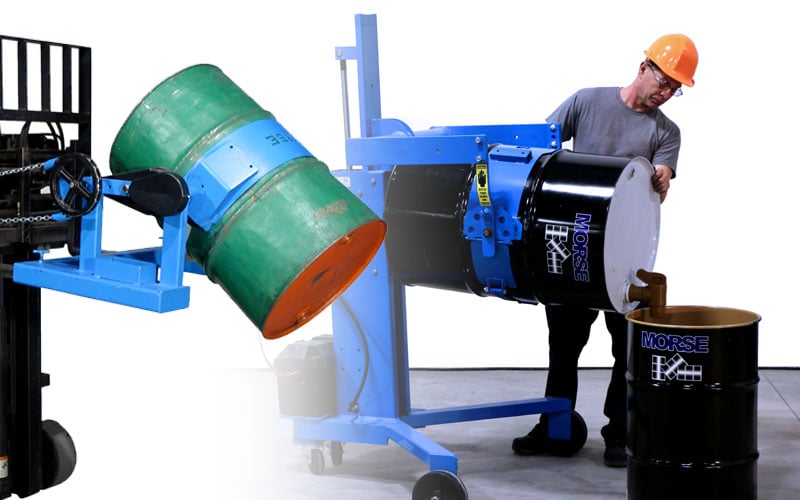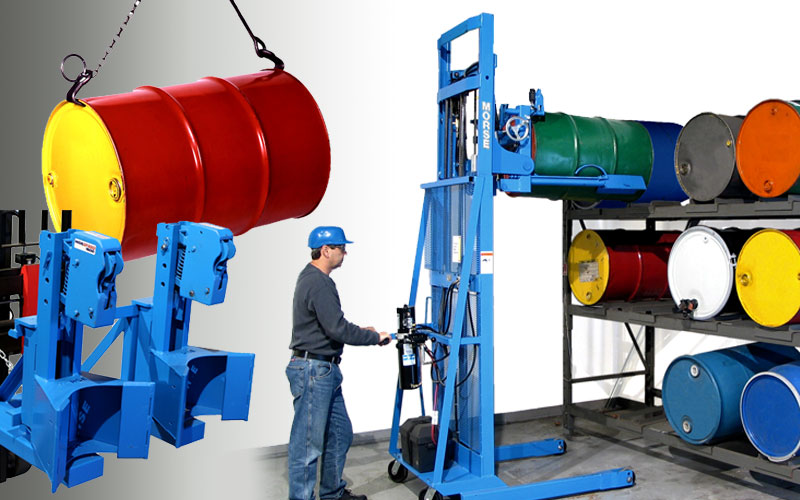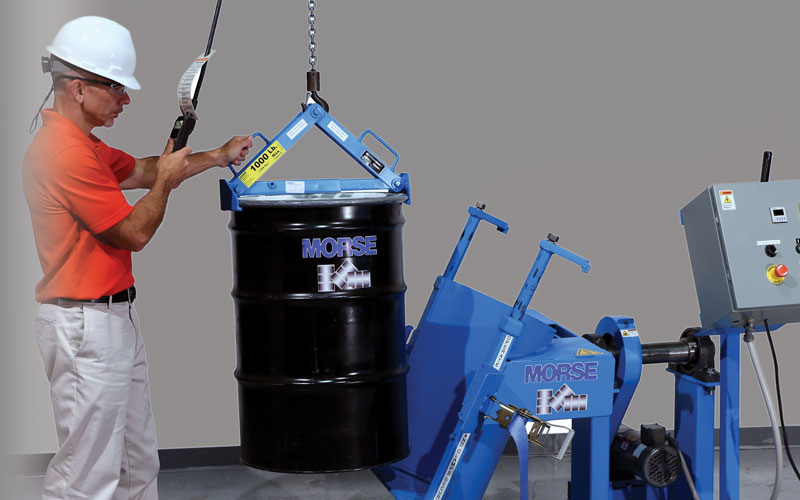Drum Handling Safety Tips

55 gallon drums can weigh up to a whopping two thousand pounds or more, depending on their contents. That's equivalent to a grand piano! It's crucial to remember that these drums are not your everyday household item, and they require special care and attention when it comes to their transport to ensure the safety of both the drum and its contents, as well as the person handling it.
1) Utilize the right drum handling equipment
 Mishandling a heavy drum can cause serious injury, damage the drum, waste valuable contents, or contaminate the environment. Heavy drums should always be moved with proper drum handling equipment. Use a drum truck, forklift attachment, below-hook drum lifter or other drum lifting equipment specifically designed for drum handling. Moving drums with a bare fork on your forklift is not recommended, as the drum can slip, or damage to the drum can occur. Never try to turn a drum on its side to 'roll' it into position, and be real… a 55 gallon drum is not something you should lift by hand, even 'with your knees'. Utilize our blog on How To Choose The Right Drum Handling Solution for more information on how to select the right drum handling equipment for your material handling application.
Mishandling a heavy drum can cause serious injury, damage the drum, waste valuable contents, or contaminate the environment. Heavy drums should always be moved with proper drum handling equipment. Use a drum truck, forklift attachment, below-hook drum lifter or other drum lifting equipment specifically designed for drum handling. Moving drums with a bare fork on your forklift is not recommended, as the drum can slip, or damage to the drum can occur. Never try to turn a drum on its side to 'roll' it into position, and be real… a 55 gallon drum is not something you should lift by hand, even 'with your knees'. Utilize our blog on How To Choose The Right Drum Handling Solution for more information on how to select the right drum handling equipment for your material handling application.
2. Safety, First
Let's focus on some key safety tips that can help prevent drum handling mishaps. First and foremost, always wear appropriate personal protective equipment (PPE) such as safety gloves, chemical splash protective goggles, and sturdy footwear. This might sound like common sense, but you'd be surprised at how many accidents occur due to improper attire. As drums often contain oils and fluids that can make surfaces and the drum itself slippery, gloves with a textured palm that increase traction are recommended when handling drums. Additionally, as the fluids in the drum may splash when mixed or poured, wearing goggles or safety glasses with wrap-around lenses, along with chemical resistant gloves is advised during those applications.
Common drum handling injuries include a strained back, crushed fingers or hands, and foot trauma. Incidents of dropped drums, or drums rolling out of control, can also cause spills and damage. Also, be aware of each 55 gallon drum's contents and be sure to take special care when handling flammable contents, which require use of spark-resistant drum handling equipment and safe storage.
3. Take It Slow:
No need to rush! When transporting or moving a drum, always take your time and move at a steady pace. Avoid making quick or abrupt movements as they can increase the risk of accidents, such as the drum slipping. Additionally, given the weight of fifty five gallon drums, moving them quickly makes coming to a sudden and full stop difficult. Transport drums at a safe and steady pace.
Also note, when being moved, the contents of your 55 gallon drum may shift inside, making the drum difficult to control or even dangerous. There are also special considerations when handling a plastic drum or a fiber drum. Conditions such as restricted spaces and slippery or uneven floors can entail greater risks. Additionally, should you stack a drum on a wooden pallet, be sure to take the time to inspect the pallet for protruding nails or sharp points that can puncture the drum and cause damage or a spill. Moving drums at a slow and steady pace is always recommended.




